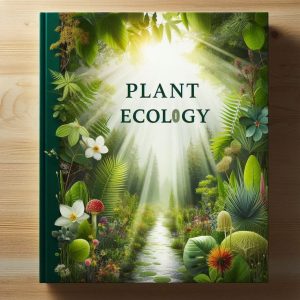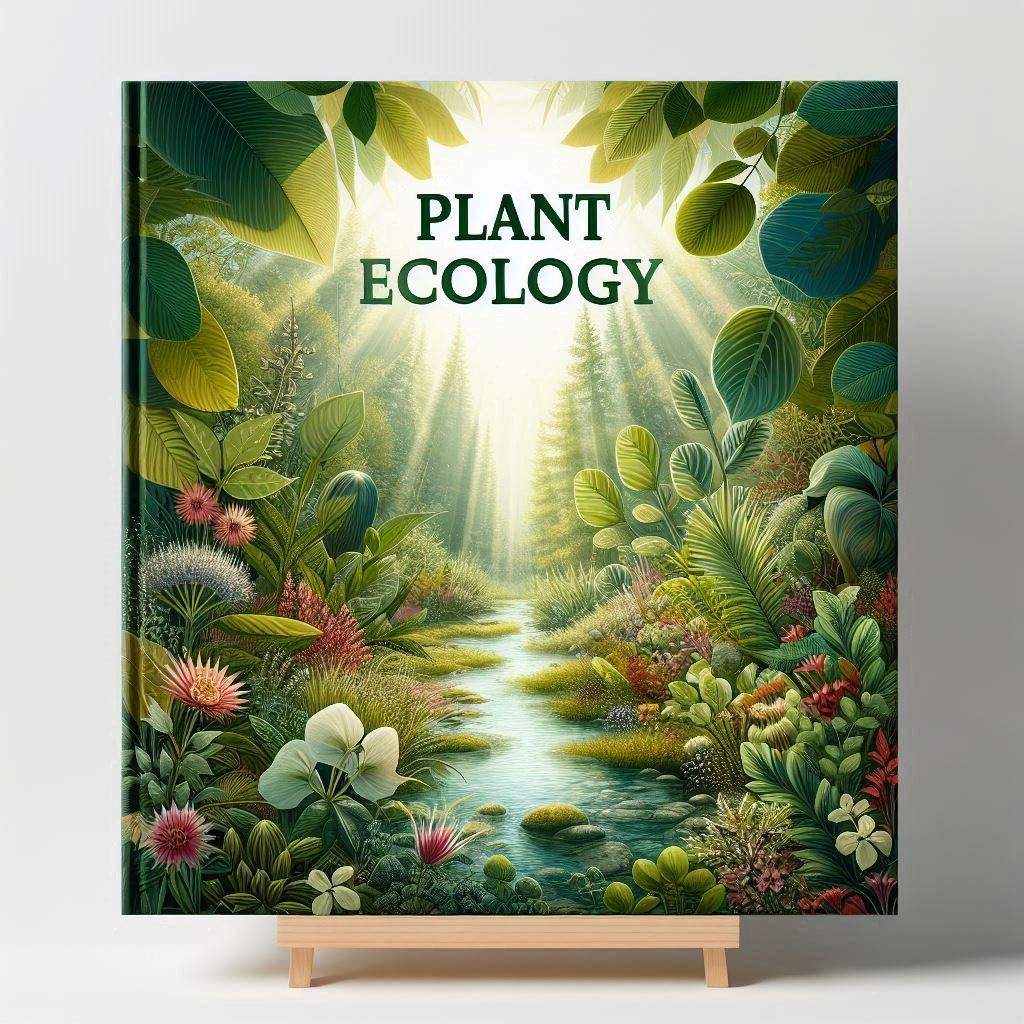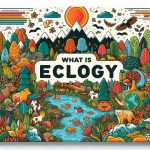Plant Ecology
Introduction to Plant Ecology
Plant ecology is a branch of ecology focused on the study of plant species, their interactions with each other, and their environment. It encompasses the examination of plant communities, ecosystems, and the processes that shape vegetation patterns. This field provides insights into how plants adapt to their surroundings, their role in ecosystems, and the impacts of environmental changes on plant life. For more on the basics of ecology, visit Britannica’s Ecology Overview.
Key Concepts in Plant Ecology
Plant ecology covers several key concepts, including:
- Plant Communities: The study of how different plant species interact and form communities within a given area. This includes understanding the structure, composition, and dynamics of plant communities. Learn more about plant communities at ScienceDirect.
- Vegetation Dynamics: Analysis of how vegetation changes over time due to natural processes or human activities. This includes succession, disturbance, and recovery. For further reading, see Springer’s Textbook on Vegetation Dynamics.
- Plant Adaptations: Exploration of how plants adapt to their environment, including drought resistance, nutrient acquisition, and competition. Discover more about plant adaptations at Annual Reviews.
Plant-Ecosystem Interactions
Plant-ecosystem interactions are fundamental to understanding how ecosystems function. These interactions involve the ways in which plants interact with their environment and other organisms to maintain ecosystem balance and productivity. Plants are central to most ecosystems as they provide the primary source of energy and contribute to various ecological processes. For a broader overview of ecosystems, you can explore National Geographic’s Ecosystems.
Primary Production
Primary production refers to the process by which plants, through photosynthesis, convert solar energy into chemical energy stored in organic compounds. This process forms the base of the food chain and supports all other trophic levels in an ecosystem.
- Gross Primary Production (GPP): The total amount of energy captured by plants through photosynthesis.
- Net Primary Production (NPP): The amount of energy remaining after plants have used some for their own metabolic processes. NPP is available for consumption by herbivores and decomposers.
For a detailed look at primary productivity, check out Nature’s Research on Primary Productivity.
Nutrient Cycling
Nutrient cycling involves the movement and transformation of essential nutrients within an ecosystem. Plants play a crucial role in nutrient cycling by absorbing nutrients from the soil and returning them through processes such as leaf litter decomposition and root exudation.
- Biogeochemical Cycles: These include the carbon cycle, nitrogen cycle, and phosphorus cycle. Plants contribute to these cycles by taking up nutrients, incorporating them into biomass, and recycling them back into the environment.
- Decomposition: The breakdown of plant material by decomposers releases nutrients back into the soil, making them available for other plants.
Explore more about nutrient cycling at Springer’s Nutrient Cycling in Ecosystems.
Plant-Animal Interactions
Plant-animal interactions are diverse and include various relationships such as mutualism, herbivory, and predation. These interactions influence plant fitness and ecosystem dynamics.
- Pollination: Many plants rely on animals like bees, butterflies, and birds to transfer pollen between flowers, facilitating reproduction. Learn more about pollination at ScienceDirect.
- Seed Dispersal: Animals such as birds, mammals, and insects help disperse seeds, allowing plants to colonize new areas. For insights into seed dispersal, visit Annual Reviews.
- Herbivory: Herbivores consume plant material, affecting plant growth and survival. Plants have evolved various defenses, such as physical barriers and chemical deterrents, to protect themselves from herbivores. Learn more about herbivory at JSTOR’s Study on Herbivory.
Ecological Significance
The interactions between plants and their ecosystems are critical for maintaining ecological balance and supporting biodiversity. Plants influence and are influenced by various ecological factors, including:
- Biodiversity: Healthy plant communities support a diverse range of organisms, contributing to ecosystem resilience and stability.
- Ecosystem Services: Plants provide essential services such as carbon sequestration, water filtration, and soil stabilization. For a comprehensive overview of ecosystem services, see Nature’s Ecosystem Services.
- Climate Regulation: Plants play a role in regulating climate through processes such as transpiration and carbon storage. For more information on this topic, visit IPCC’s Climate Change Report.
Research Trends in Plant Ecology
Current research trends in plant ecology focus on understanding how climate change, habitat loss, and other anthropogenic factors impact plant communities and ecosystems. Key areas of research include:
- Climate Change Impact: Investigating how shifts in temperature and precipitation affect plant distribution, growth, and reproduction. For recent studies, check out Nature.
- Restoration Ecology: Efforts to restore degraded ecosystems and enhance plant biodiversity. Learn more about restoration practices at ScienceDirect.
- Urban Ecology: Exploring how plant communities adapt to urban environments and contribute to urban sustainability. For insights, visit Springer.

Applications of Plant Ecology
Plant ecology is not just a theoretical field; it has numerous practical applications that impact various aspects of environmental management, agriculture, and urban planning. By applying plant ecological principles, we can address challenges related to conservation, sustainability, and ecosystem health. For an overview of plant ecology, visit Botanical Society of America.
Conservation Planning
Conservation planning utilizes plant ecology to protect and restore natural habitats, preserve biodiversity, and manage endangered species. Key aspects include:
- Habitat Restoration: Using ecological knowledge to restore degraded habitats and improve conditions for native plant species. For methods and case studies, check ScienceDirect’s Habitat Restoration.
- Endangered Species Management: Developing strategies to protect and recover endangered plant species. Explore resources at IUCN Red List.
- Protected Areas Design: Creating and managing protected areas based on plant community distribution and ecological needs. Learn more from National Geographic.
Sustainable Agriculture
Sustainable agriculture applies plant ecological principles to enhance agricultural practices while minimizing environmental impact. Key applications include:
- Agroecology: Integrating ecological principles into agricultural systems to improve productivity and sustainability. For insights, visit Agroecology.org.
- Soil Health Management: Understanding plant-soil interactions to improve soil fertility and reduce erosion. Learn more from Soil Health Institute.
- Crop Diversity: Utilizing plant diversity to enhance resilience against pests, diseases, and climate variability. Explore related research at ScienceDirect.
Landscape Management
Landscape management involves designing and maintaining landscapes that integrate ecological principles to support biodiversity and ecosystem services. Key practices include:
- Native Plant Landscaping: Using native plants to create sustainable and low-maintenance landscapes. Discover more about native plant landscaping at Plant Native.
- Green Infrastructure: Designing urban environments with ecological features such as green roofs and rain gardens to manage stormwater and improve air quality. Learn more from EPA’s Green Infrastructure.
- Habitat Corridors: Creating corridors to connect fragmented habitats and support wildlife movement. For resources, visit The Nature Conservancy.
Urban Planning
Urban planning incorporates plant ecological knowledge to create healthier and more sustainable urban environments. Key areas include:
- Urban Greening: Integrating green spaces and vegetation into urban areas to enhance quality of life and ecological health. Explore urban greening initiatives at Urban Ecology.
- Ecological Urban Design: Designing urban spaces that mimic natural processes and support biodiversity. Learn more from ArchDaily.
- Climate Resilience: Using plant-based solutions to mitigate the impacts of climate change in urban settings. Discover strategies at C40 Cities.

Future Directions in Plant Ecology
Introduction
Plant ecology, the study of the relationships between plants and their environment, is evolving rapidly as new challenges and opportunities emerge. Understanding these future directions is crucial for advancing ecological science and addressing pressing environmental issues. This article explores the anticipated developments and trends in plant ecology, highlighting how advancements in technology, climate change, and conservation strategies will shape the field. For more background on plant ecology, visit Botanical Society of America.
Advances in Technology
Technological innovations are transforming plant ecology, offering new tools and methods to study and manage plant systems. Key advancements include:
- Remote Sensing: The use of drones and satellite imagery to monitor plant health, distribution, and changes over time. Remote sensing technologies provide high-resolution data for large-scale ecological studies. Explore more at NASA’s Ecosystems.
- Genomic Tools: Advances in genomic sequencing and analysis are enhancing our understanding of plant genetics, adaptation, and evolution. Genomic tools are crucial for studying plant responses to environmental stressors and developing crop varieties with improved traits. Learn more about plant genomics at Plant Genomics.
- Computational Modeling: The development of sophisticated models to simulate plant growth, interactions, and ecosystem processes. Computational modeling helps predict the impacts of environmental changes and guide management practices. For insights into ecological modeling, visit EcoComplexity.
Climate Change Adaptation
As climate change accelerates, plant ecologists are focusing on adaptation strategies to help ecosystems cope with shifting conditions. Future directions in this area include:
- Climate Resilience: Developing and implementing strategies to enhance the resilience of plant species and ecosystems to climate change impacts. This includes restoring degraded habitats and selecting climate-resilient plant varieties. Explore resilience strategies at IPCC.
- Phenological Studies: Investigating changes in plant life cycles, such as flowering and fruiting times, in response to climate variability. Phenological research helps predict how plants will adapt to changing climate patterns. Learn more at Phenology.org.
- Carbon Sequestration: Studying the role of plants in capturing and storing atmospheric carbon dioxide to mitigate climate change. This research is vital for developing effective carbon management strategies. For related research, see Nature’s Carbon Sequestration.
Conservation Strategies
Conservation efforts are increasingly incorporating plant ecological knowledge to protect biodiversity and maintain ecosystem services. Future directions in conservation include:
- In-Situ Conservation: Protecting plants in their natural habitats through the establishment of protected areas and conservation programs. This approach helps maintain ecosystem functions and biodiversity. For more details, visit IUCN Protected Areas.
- Ex-Situ Conservation: Preserving plant species outside their natural habitats, such as in botanical gardens, seed banks, and tissue culture collections. Ex-situ conservation supports the protection of endangered plants. Learn more at Botanic Gardens Conservation International.
- Restoration Ecology: Applying ecological principles to restore degraded ecosystems and rehabilitate habitats. Restoration efforts aim to reestablish native plant communities and ecosystem functions. Explore restoration techniques at Society for Ecological Restoration.
Ecological Research and Collaboration
Future research in plant ecology will involve increased collaboration across disciplines and sectors. Key areas of focus include:
- Interdisciplinary Research: Combining plant ecology with fields such as climate science, agronomy, and urban planning to address complex environmental challenges. Collaborative research fosters holistic solutions. For interdisciplinary research examples, visit ScienceDirect.
- Citizen Science: Engaging the public in data collection and monitoring efforts to enhance ecological research and conservation. Citizen science projects help gather large-scale data and raise environmental awareness. Learn about citizen science at Citizen Science.org.
- Global Networks: Participating in international research networks and collaborations to address global ecological issues. Global cooperation facilitates knowledge exchange and resource sharing. For information on global networks, visit GlobalChange.gov.
The future of plant ecology holds exciting possibilities as advancements in technology, climate adaptation strategies, and conservation efforts continue to evolve. By embracing these future directions, plant ecologists can contribute to solving critical environmental challenges and promoting sustainable practices. For further exploration of plant ecology and its future directions, visit Botanical Society of America.
Conclusion
Plant ecology is a vital field of study that enhances our understanding of plant life and its interactions with the environment. By exploring plant communities, ecosystem dynamics, and the impacts of human activities, plant ecologists contribute to effective conservation strategies, sustainable practices, and a deeper appreciation of the natural world. For further reading on plant ecology, visit Botanical Society of America.
Frequently Asked Questions (FAQs)
1. What is plant ecology?
Plant ecology is the study of plant interactions with their environment, including their distribution, abundance, and the effects of biotic and abiotic factors on plant life.
2. Why is plant ecology important?
Plant ecology is crucial for understanding ecosystems’ health, informing conservation strategies, and managing natural resources. It helps us address environmental challenges and sustain biodiversity.
3. What methods are used in plant ecology research?
Common methods include field surveys, laboratory experiments, remote sensing, and modeling. Each method provides different insights into plant interactions and ecosystem dynamics.
4. How does climate change impact plant ecology?
Climate change affects plant ecology by altering temperature, precipitation patterns, and extreme weather events, which can shift plant distributions, change growth rates, and impact ecosystem services.
5. What role do plant ecologists play in conservation?
Plant ecologists contribute to conservation by studying plant species’ needs, designing restoration projects, and developing strategies to protect endangered plants and habitats.
6. How can plant ecology help in sustainable agriculture?
Plant ecology provides insights into crop management, soil health, and pest control, enabling the development of sustainable agricultural practices that enhance productivity and reduce environmental impact.
7. What is the difference between plant ecology and botany?
Botany is the broader study of plants, including their physiology, structure, and classification, while plant ecology specifically focuses on plant-environment interactions and ecosystem dynamics.
8. How does plant ecology address invasive species?
Plant ecology helps identify and manage invasive species by studying their impacts on native plants and ecosystems, and developing strategies to mitigate their spread and effects.
9. What are some key challenges in plant ecology research?
Key challenges include climate change impacts, habitat loss, limited funding, and the need for interdisciplinary approaches to address complex ecological issues.
10. How can I get involved in plant ecology research?
You can get involved by pursuing academic courses, participating in citizen science projects, or volunteering with conservation organizations. For more opportunities, visit Ecology.org.
11. What are some recent advancements in plant ecology?
Recent advancements include the use of remote sensing technology, molecular techniques for understanding plant interactions, and modeling approaches to predict ecological responses to environmental changes.
12. How do plant ecologists collaborate with other scientists?
Plant ecologists often collaborate with climatologists, conservation biologists, soil scientists, and policy makers to address complex ecological issues and develop integrated solutions.
13. Are there any ethical considerations in plant ecology research?
Yes, ethical considerations include respecting natural habitats, avoiding harm to endangered species, and ensuring research practices are conducted responsibly and sustainably.
14. Where can I find more information about plant ecology?
For more information, explore resources from organizations such as Botanical Society of America, The Nature Conservancy, and ScienceDaily’s Ecology Section.
Disclaimers and Cautions
1. General Information
The information provided on plant ecology is for educational and informational purposes only. It is not a substitute for professional advice or consultation with qualified experts in the field.
2. Accuracy of Information
While every effort is made to ensure the accuracy of the information, plant ecology is a dynamic field with ongoing research and developments. Consult current literature and experts for the most up-to-date information.
3. Research Participation
Participating in plant ecology research or conservation efforts should be done under the guidance of qualified professionals. Ensure that all activities comply with relevant regulations and ethical standards.
4. Environmental Impact
When engaging in fieldwork or ecological restoration, minimize environmental impact and follow best practices to avoid disrupting natural habitats and ecosystems.
5. Safety Precautions
Take appropriate safety measures when conducting field research, including wearing suitable protective gear and being aware of potential hazards in natural environments.
6. Ethical Considerations
Respect the natural environment and wildlife when conducting research or conservation activities. Avoid any practices that could harm ecosystems or species.
7. Data Handling
Handle ecological data with care, ensuring confidentiality and proper use of information. Follow data management best practices to maintain integrity and reliability.
8. Collaboration
Collaborate with other scientists and stakeholders responsibly, sharing knowledge and resources to achieve common goals in plant ecology and conservation.
9. Legal Compliance
Ensure compliance with all relevant local, national, and international laws and regulations related to plant research and conservation activities.
10. Public Communication
When communicating research findings to the public, ensure that information is presented accurately and clearly, avoiding misinformation or exaggeration.
11. Conflict of Interest
Disclose any potential conflicts of interest when conducting and reporting research to maintain transparency and credibility.
12. Funding Sources
Be transparent about funding sources for research projects to ensure the integrity of the research process and avoid any undue influence on findings.
13. Intellectual Property
Respect intellectual property rights and properly cite sources of information and research findings to acknowledge the contributions of others in the field.
14. Continuing Education
Stay informed about advancements in plant ecology through ongoing education and professional development to ensure that practices and knowledge remain current.
Disclaimers
Introduction
While plant ecology offers valuable insights and applications, it is essential to be aware of certain disclaimers and cautionary notes. These considerations help ensure accurate interpretation of research findings and responsible application of ecological principles.
Research Limitations
Plant ecology research often involves complex and dynamic systems. Therefore, it is important to acknowledge the following limitations:
- Variability and Uncertainty: Ecological studies may be influenced by various factors such as environmental conditions, species interactions, and temporal changes, leading to variability in results. For more information on research variability, visit NCBI.
- Scale and Scope: Findings from small-scale studies may not always be directly applicable to larger or different ecosystems. It is crucial to consider the scale and context when applying ecological insights. Learn more about ecological scaling at Frontiers in Ecology and Evolution.
- Data Limitations: The quality and availability of ecological data can vary, potentially impacting the reliability of conclusions. Researchers should carefully evaluate data sources and methodologies. For guidance on data quality, check Dryad.
Data Interpretation
Accurate interpretation of ecological data is critical for drawing valid conclusions. Consider the following points:
- Statistical Analysis: Proper statistical methods should be used to analyze ecological data. Misinterpretation of statistical results can lead to incorrect conclusions. Explore statistical tools for ecology at StatsDirect.
- Bias and Confounding Factors: Researchers must account for potential biases and confounding factors that could affect study outcomes. Learn about mitigating bias in ecological research at SpringerLink.
- Contextual Understanding: Ecological data should be interpreted within the broader context of ecosystem dynamics and interactions. For insights on contextual interpretation, visit Ecology and Society.
Practical Application Risks
Applying plant ecological principles in real-world scenarios requires careful consideration to avoid unintended consequences:
- Ecosystem Balance: Interventions based on ecological research should aim to maintain or restore natural balance, avoiding disruptions that could harm biodiversity. For best practices in ecosystem management, refer to IUCN Ecosystem Management.
- Invasive Species: Introducing species for ecological restoration or other purposes should be done with caution to prevent invasive species from negatively impacting native ecosystems. Learn more about invasive species management at Invasive Species Information Center.
- Unintended Consequences: Any ecological intervention carries the risk of unforeseen outcomes. Continuous monitoring and adaptive management are essential to address potential issues. For adaptive management strategies, visit USGS Adaptive Management.
Conclusion
Plant ecology offers valuable tools and insights for understanding and managing ecosystems. However, researchers and practitioners must be mindful of the limitations, interpretation challenges, and potential risks associated with ecological studies and applications. By acknowledging these factors, we can ensure more accurate, reliable, and responsible use of plant ecological knowledge. For further reading on plant ecology, visit Botanical Society of America.



